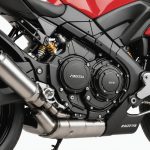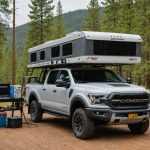Importance of Roof-Mounted Antenna Protection
Embarking on off-road adventures offers excitement and thrill, but it also poses risks to your vehicle, particularly to its roof-mounted antenna. This critical component is prone to damage from low-hanging branches, rough terrain, and debris—hazards commonly encountered on such escapades.
When the roof-mounted antenna suffers damage, it can negatively impact vehicle functionality and communication systems. For instance, disrupted navigation can lead to misguided routes in unfamiliar environments, while poor radio reception cuts off essential real-time information and entertainment. These are scenarios every enthusiast would want to avoid during their off-road escapades.
Topic to read : Essential Tips for Safeguarding Your Vehicle”s Rollover Protection System
Protecting the roof-mounted antenna is not just about shielding a component but rather enhancing the overall off-road experience. A well-preserved antenna maintains the integrity of the vehicle’s communication systems, enabling adventurers to receive accurate GPS navigation, seamless communication, and uninterrupted entertainment.
Implementing protective measures for your roof-mounted antenna ensures that you remain informed and connected. This, in turn, contributes to a safe and enjoyable adventure, where you can focus more on exploring and less on potential communication or functional woes.
This might interest you : Key Factors to Ensure Safety and Reliability When Installing a Dual Battery System in Your Camping Vehicle
Investing in protection is a strategic decision that assures both the reliability of your vehicle and the pleasure of your off-road journeys.
Secure Mounting Techniques
Selecting the appropriate antenna installation is crucial for off-road enthusiasts. A strong and reliable secure mounting solution can prevent damage and maintain performance during rugged adventures.
Choosing the Right Antenna Mount
When preparing for off-road conditions, it is vital to choose a mount that withstands intense vibrations and unpredictable terrain. Look for mounts specifically designed for off-road preparation, as these options typically offer enhanced durability and stability. Mounts made of stainless steel or heavy-duty plastic are preferred for their resistance to corrosion and environmental wear.
Installation Best Practices
Correct installation is essential to prevent the antenna from loosening. Start by ensuring the mounting surface is clean and level. Always use the manufacturer’s recommended tools and hardware to ensure a firm attachment. Double-check alignment before tightening all screws, as a misaligned antenna can impede performance.
Regular Checks and Maintenance
To preserve mounting integrity, scheduling routine inspections is necessary. Regularly check for any looseness or corrosion signs, as off-road environments can easily degrade mounts. Tighten any screws that might have loosened and clean off any dirt or debris that may affect the antenna’s functionality. Frequent maintenance ensures the antenna remains securely mounted and operable during each adventure.
Protective Covers and Accessories
Choosing suitable protective gear for your vehicle’s antennas can significantly enhance their longevity, particularly in challenging off-road environments. Antenna covers stand out as essential accessories. They come in various types, ranging from weatherproof sleeves to hardened shell cases. These covers provide protection against harsh weather and debris, ensuring seamless functionality.
Types of Protective Covers
There are several options to consider when selecting antenna covers. Soft covers are lightweight and provide basic protection against dust and light impact. On the other hand, hard covers offer robust defense against significant outdoor elements, which is crucial for off-road enthusiasts.
DIY vs. Commercial Solutions
When it comes to protective gear, you have the choice between crafting your own or purchasing ready-made covers. DIY solutions can be cost-effective and customizable but require skill and time. Commercial options, while potentially more expensive, deliver professionally designed protection that’s often easier to install.
Additional Accessories for Enhanced Protection
Beyond covers, additional off-road accessories like guards, shields, and mounts also contribute significantly to antenna protection. These accessories safeguard antennas from branches, rocks, and other potential hazards encountered off-road, thereby enhancing their operational lifespan and reliability.
Troubleshooting Common Antenna Issues
Navigating through antenna issues can be frustrating, especially after those adventurous off-road trips. Let’s demystify the process of identifying and tackling these common concerns effectively.
Identifying Damage
After an off-road trip, antennas often bear the brunt of rugged terrains. Look for visible signs such as bent or broken components. Frequent signal loss or reception inconsistencies can also indicate underlying antenna damage. These symptoms are crucial markers to determine if the antenna has been compromised during your latest adventure.
Easy Fixes for Minor Problems
For minor antenna troubleshooting, simple fixes can go a long way in maintaining optimal performance. Adjusting the antenna to its ideal position can often rectify alignment issues. Tightening loose parts can resolve intermittent signal issues. These straightforward solutions are perfect for tackling minor concerns without professional help. With a careful eye and some basic tools, you can ensure your antenna remains in good condition.
When to Seek Professional Help
Sometimes, the complexity of problems surpasses home remedies, indicating the need for professional intervention. If after applying the initial solutions, the signal remains weak, or if parts appear beyond repair, it’s time to consult an expert. Common issues like persistent reception failure might require specialized equipment or expertise for a complete fix.
Best Practices for Off-Road Adventures
Embarking on an off-road adventure requires thorough preparation and vehicle care. Ensuring your vehicle is ready for the challenges of off-road terrain involves a few critical steps.
Pre-Adventure Checklist
Before any adventure, inspecting your vehicle is crucial. Begin by checking your tyres for proper inflation and tread wear, essential for off-road traction. Also, examine your vehicle’s undercarriage for any signs of damage or loose parts, which can worsen over rough terrain. Adequate fluids are another part of the checklist, including oil and coolant levels to prevent overheating.
Driving Techniques to Minimize Risks
On the trail, adopting careful driving techniques is vital to safeguard your vehicle’s components. Maintain moderate speeds, avoiding sudden stops or acceleration, and always be prepared to adjust steering to terrain changes. When experiencing difficult terrains like muddy or rocky paths, be mindful of your surroundings to avoid damaging your vehicle’s antenna or other sensitive areas.
Post-Adventure Maintenance
After your adventure, perform a thorough vehicle inspection. Check for any debris or dirt accumulated around the tyres and undercarriage. Clean and lubricate moving parts to prevent rust and wear, which helps maintain your vehicle’s integrity for future adventures. Additionally, inspect the antenna for any signs of bends or cracks caused during the trip.











